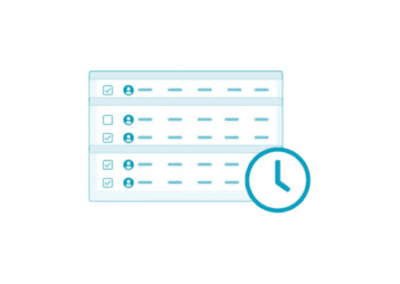The responsibility of a supervisor or manager is to ensure that your team members are performing at their best. However, sometimes even the best employees may struggle to meet expectations. When this happens, it’s important to create an effective Performance Improvement Plan (PIP) to help them get back on track. In this blog post, we’ll discuss the benefits of a PIP, then you should implement one and the steps to take to make it effective.
What Are The Benefits of an Effective Performance Improvement Plan?

There are several benefits to implementing a Performance Improvement Plan (PIP) for an employee who is struggling to meet expectations. First and foremost, a PIP provides clear expectations and actionable steps for the employee to improve their performance. This can help to increase their motivation and engagement, as they have a clear roadmap for how to succeed. Additionally, the PIP process provides opportunities for ongoing feedback and support, which can help to build a stronger working relationship between the employee and their supervisor. Finally, a successful PIP can result in improved job performance and job satisfaction for the employee, as well as increased productivity and profitability for the organization.
When Should You Implement a Performance Improvement Plan?
A Performance Improvement Plan (PIP) should be implemented when an employee’s performance falls below expectations and traditional methods of feedback and coaching have not been successful in addressing the issue. Although 53% of employees report that reviews don’t make them work any harder PIP should be used as a tool to help the employee understand where they need to improve and to provide them with a clear roadmap for how to achieve those improvements. It’s important to note that a PIP should not be used as a punitive measure, but rather as a way to support and guide the employee towards success. A PIP may also be appropriate when there is a specific performance issue that needs to be addressed, such as a decline in quality or an increase in errors. Ultimately, the decision to implement a PIP should be made on a case-by-case basis, with careful consideration given to the employee’s individual needs and circumstances. Let’s now look at the steps to take in order for the plan to be effective!
1. Identify Performance Issues

The first step in creating an effective PIP is to clearly identify the specific performance issue that needs to be addressed. This could be related to quality, quantity, timeliness, or any other aspect of job performance. It’s important to be specific and objective when identifying the performance issue to ensure that the employee understands what they need to improve.
2. Form Clear Expectations
Once the performance issue has been identified, the next step is to set clear expectations for what the employee needs to do to improve. These expectations should be specific, measurable, achievable, relevant, and time-bound (SMART). For example, if the performance issue is related to quality, the expectation might be for the employee to increase their accuracy rate by a certain percentage within a specific timeframe.
3. Develop a Plan of Action
After setting clear expectations, the next step is to develop an action plan that outlines the steps the employee needs to take to improve their performance. This plan should be tailored to the specific performance issue and the employee’s individual needs. It should also include any necessary resources or support that the employee will need to achieve their goals. The action plan should be structured and include deadlines for each step.
4. Schedule Check-Ins

It’s important to schedule regular check-ins with the employee to monitor their progress and provide feedback. These check-ins should be scheduled at regular intervals, such as weekly or bi-weekly, and should provide an opportunity for the employee to ask questions or raise any concerns they may have. During these check-ins, the supervisor should provide feedback on the employee’s progress and adjust the action plan if necessary.
5. Provide Ongoing Feedback and Support
Providing ongoing feedback and support is crucial to the success of the PIP process. This can include positive feedback when the employee makes progress towards their goals, as well as constructive feedback when they fall short. It’s also important to provide any necessary training or resources to help the employee improve their skills and knowledge.
6. Evaluate Results
At the end of the PIP period, it’s important to evaluate the results to determine whether the employee has successfully improved their performance. If they have, recognize their hard work and celebrate their success. If they haven’t, it may be necessary to extend the PIP or explore other options, such as reassigning the employee to a different role.
Final Thoughts
A performance Improvement Plan is a structured process that can help employees improve their performance. By following these steps when the right time comes, managers and supervisors can create an effective PIP that helps their team members improve their performance and achieve their full potential. It’s important to be clear, specific, and objective when identifying performance issues and setting expectations, and to provide ongoing feedback and support throughout the PIP process. With a well-designed PIP, employees can improve their performance and contribute to the success of the organization.




